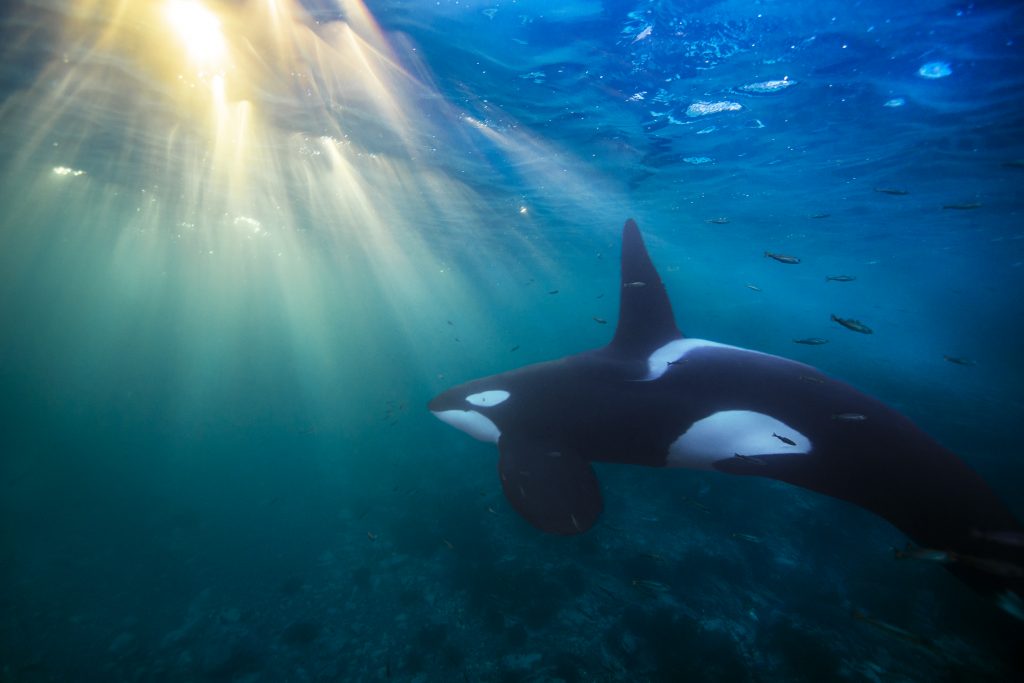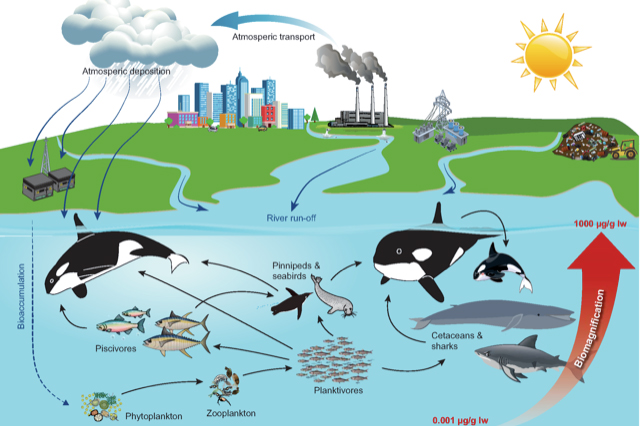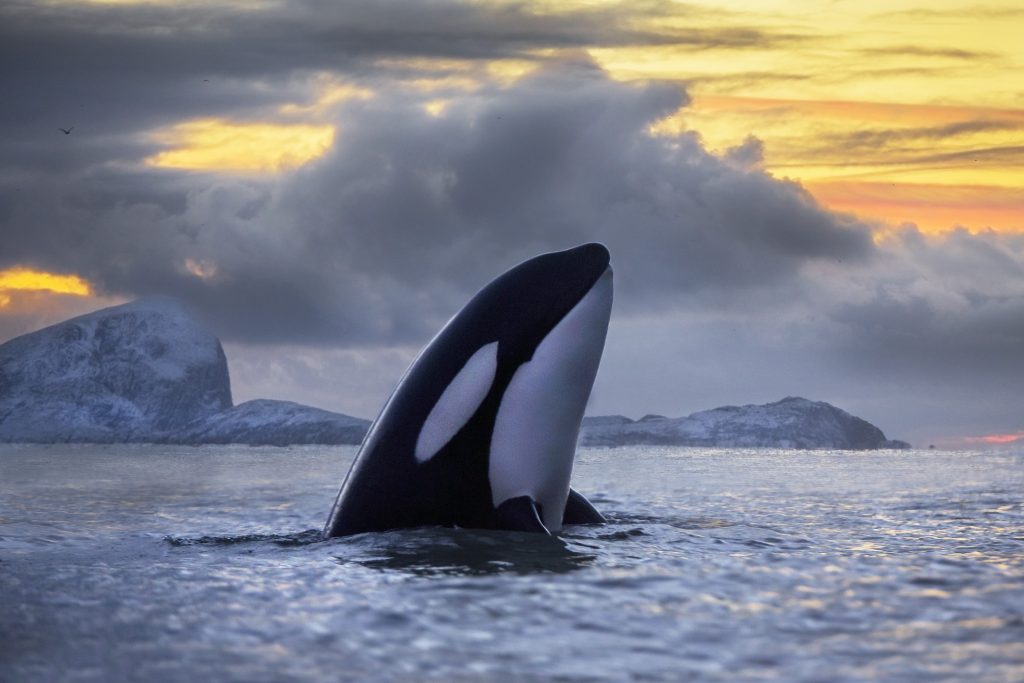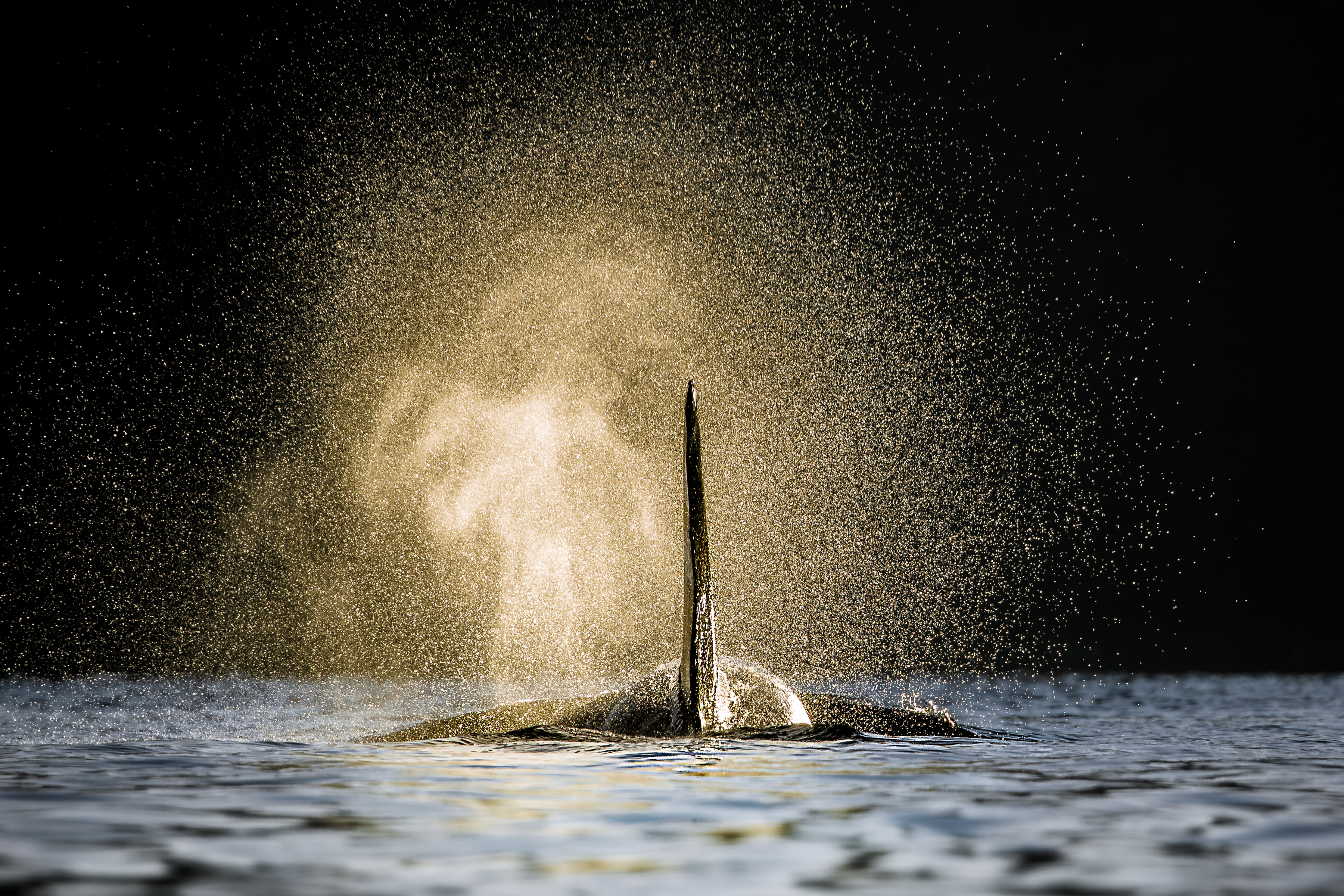More than 40 years after the first initiatives were taken to ban the use of PCBs, these chemical pollutants remain a deadly threat to animals at the top of the food chain. A new study, just published in the journal Science, shows that the current concentrations of PCBs can lead to the disappearance of half of the world’s populations of killer whales from the most heavily contaminated areas within a period of just 30 to 50 years.

Milton Levin, an assistant research professor in the Department of Pathobiology and Veterinary Science, is part of a research team from a number of international universities and research institutions that documented a rapid decline in the number of killer whales in 10 out of the 19 populations investigated, and concludes the species may disappear entirely from several areas within a few decades.
Killer whales (Orcinus orca) form the last link in a long food chain and are among the mammals with the highest level of PCBs (polychlorinated biphenyls) in their tissue. Researchers have measured values as high as 1300 milligrams per kilo in the fatty tissue (blubber) of killer whales. By comparison, many studies show that animals with PCB levels as low as 50 milligrams per kilo of tissue may show signs of infertility and severe impacts on the immune system.
PCBs accumulate in the food chain
The killer whale is one of the most widespread mammals on Earth and is found in all of the world’s oceans from pole to pole. But today, only the populations living in the least polluted areas possess a large number of individuals.
Overfishing and man-made noise may also affect the health of the animals, but PCBs can have a particularly dramatic effect on the reproduction and immune systems of the killer whales.

Killer whales whose diet includes, among other items, seals and large fish such as tuna and sharks accumulate PCBs and other pollutants stored at successive levels of the food chain. It is these populations of killer whales that have the highest PCB concentrations, and it is these populations that are at the highest risk of population collapse. Killer whales that primarily feed on small-sized fish such as herring and mackerel have a significantly lower content of PCBs and are thus at lower risk of the effects.
PCBs have been used around the world since the 1930s. More than one million tons of PCBs were produced and used in, among other things, electrical components and plastics. Together with DDT and other organic pesticides, PCBs have spread in oceans around the globe.
In the 1970s and 1980s, PCBs were banned in several countries and in 2004, through the Stockholm Convention, more than 90 countries committed themselves to phase out and dispose of their large stocks of PCBs.
Unfortunately, however, says Levin, “PCBs have a very long half-life and will remain in the environment for many, many years.”
In addition, PCBs are passed down from the mother orca to her offspring through the mother’s fat-rich milk, so that the hazardous substances remain in the animals’ bodies, instead of being released into the environment where they would eventually deposit or degrade.
A global investigation
“We know that PCBs deform the reproductive organs of animals such as polar bears. It was therefore only natural to examine the impact of PCBs on the scarce populations of killer whales around the world,” says Professor Rune Dietz from the Department of Bioscience and Arctic Research Centre, Aarhus University, who initiated the killer whale studies and is co-author of the article.
The research group, which includes participants from the United States, Canada, England, Greenland, Iceland, and Denmark, reviewed all the existing literature and compared all available data with their own most recent results. This provided information about PCB levels in more than 350 individual killer whales around the globe – the largest number of killer whales ever studied.
While at UConn as a visiting scholar, lead author Jean-Pierre Desforges was trained by Levin to perform immunological assays on samples taken from killer whales. These data was then used in the study.
Applying models, the researchers then predicted the effects of PCBs on the number of offspring as well as on the immune system and mortality of the killer whale over a period of 100 years.
More than 50 percent of the populations under threat
“The findings are surprising,” says Desforges, now a postdoc at Aarhus University, who led the investigations. “We see that over half of the studied killer whale populations around the globe are severely affected by PCBs.”
The effects result in fewer and fewer animals over time in these populations. The situation is worst in heavily contaminated areas such as the waters near Brazil, the Strait of Gibraltar, the northeast Pacific, and around the UK, where the models show the populations have been virtually halved during the roughly 50 years PCBs have been present. Around the British Isles, the researchers estimate the remaining population comprises fewer than 10 killer whales.
“In these areas, we rarely observe newborn killer whales,” says Ailsa Hall, who together with Bernie McConnell developed the models used by the Sea Mammal Research Unit in Scotland.
The models predict a high risk of population collapse in these areas within a period of 30-40 years.

A female killer whale may live for 60-70 years, and although the world took its first steps to phase out PCBs more than 40 years ago, killer whales still have high levels of PCBs in their bodies.
“This suggests that the efforts have not been effective enough to avoid the accumulation of PCBs in high trophic level species that live as long as the killer whale does,” says killer whale expert and co-author Paul Jepson of the Institute of Zoology, Zoological Society of London, England. “There is therefore an urgent need for further initiatives than those under the Stockholm Convention.”
In the oceans around the Faroe Islands, Iceland, Norway, Alaska, and the Antarctic, the prospects are not as gloomy. Here, killer whale populations are growing, and the models predict they will continue to do so throughout the next century.
Levin says he has hopes this study will raise awareness of the effects PCBs are still having on the environment and the animals that live in it.
“It’s encouraging to see that the data we generated in our laboratory are being used to help model and predict effects in whole populations of animals. We hope these models can help mitigate the effects of contaminants in the ecosystem.”
Further information
Milton Levin, Department of Pathobiology and Veterinary Science, University of Connecticut; tel.: 860 486-6827, email: milton.levin@uconn.edu
Postdoc Jean-Pierre Desforges, Department of Bioscience and Arctic Research Centre, Aarhus University; tel.: +45 9185 4686, email: jpd@bios.au.dk
Professor Rune Dietz, Department of Bioscience and Arctic Research Centre, Aarhus University; tel.: +45 2125 4035, email: rdi@bios.au.dk
Professor Ailsa Hall, Sea Mammal Research Unit, Scottish Oceans Institute, University of St Andrews; tel: 01334 462634/+44 7786 358981, email: ajh7@st-andrews.ac.uk
Professor Paul D. Jepson, Institute of Zoology, Zoological Society of London, Regent’s Park, London; tel: 020 7449 6691, email: Paul.Jepson@ioz.ac.uk
Read more: 10.1126/science.aat1953.



